Spotlight on Authors
Five questions with Stacy Mandel Kaplan, Kimberly Towers, Scott J. Mandel and Jordan Kaplan, authors of Hey Long Island… Do U Remember?
1. What is it about Long Island that is so fascinating to everyone who visits, lives or lived there?
Long Island is more than a geographical location, it is really a mindset. On Long Island, you have everything you could want, and all in one place: beautiful beaches and parks, music, arts and entertainment, proximity to New York City, vineyards, farms, fashion and shopping, sports… Long Island has something for everyone. Whether a person is from, has visited or lived, or lives in Brooklyn, Queens, Nassau or Suffolk, there is an ever-lasting connection for anyone who has experienced Long Island.
2. Why was it important for you to keep the “Hey Long Island... Do U Remember?” Facebook group going?
The “Hey Long Island... Do U Remember?” Facebook group is a wonderful resource allowing people to come together to share thoughts and memories of happier, simpler times. People can reconnect and revisit their childhood. Remembering friends and cherished memories have become increasingly important, especially after facing the pandemic and having restrictions on travel and gatherings with friends and family. And as new generations emerge, history only continues to build on the foundation of the past.
3. The Hey Long Island Facebook community has almost 160,000 followers and is one of the most dynamic and growing sites in New York. Why is this subject so fascinating to so many people?
Long Island means so much to so many people. The history, nostalgia, culture, people and places all create a common bond with anyone who has a connection to Long Island. Group members love to share their own stories and memories and to read those of other Long Islanders. It is that common bond that drives people to our online community. Unlike other historical sites, our community allows people to share their personal thoughts and experiences as part of what Long Island means to them.
4. What surprised you most when you were researching this book?
Although we all were born and raised on Long Island and thought we knew a lot about our birthplace, it was truly amazing to learn more details about individual areas and to explore deeper into Long Island’s incredibly rich history. One of the great aspects of the book Hey Long Island… Do U Remember? is that readers will not only get to reminisce about places they already know but will also get insights into places and history they didn’t know existed.
5. Where did you find the photos in this book? Was there one that particularly stood out to you?
We were fortunate to have a lot of support from our loyal members from the Facebook page “Hey Long Island… Do U Remember?” as well as assistance from a myriad of local historians and historical societies. Photographs and artwork from Long Island photographers, artists, and family photos from our group members were a big part of telling the story of Long Island in our book. From our research and all of the amazing photos we acquired and included in the book, it’s difficult to select just one photo that stands out. However, some of the great photos include Long Island's The Big Duck, the 1964-1965 World’s Fair Unisphere, Nunley's Carousel, and of course, the Montauk Lighthouse which graces the book’s cover.
Five questions with Justin Smith and Skip Myers, authors of Idaho: A History in Pictures.
1. What is it about the state of Idaho that is so fascinating to everyone who visits?
The most common thing we hear from visitors is, “We thought it was all just potatoes!” That’s pretty funny to most of us because the “famous potatoes” campaign was designed to boost agriculture, not to promote the state. The majority of Idaho consists of gorgeous mountain ranges and forests, dizzying canyons, and vast open steppe punctuated by lava flows. The state’s history is rich with mining, logging, political intrigue, farming, and Wild West stories that are better than the movies.
2. Why was it important for you to keep the Idaho Facebook group going?
It’s the top history group for our state and it’s an important resource for teachers, students, newcomers, and those citizens who may not have paid much attention in class. We strive for a high-quality page with a large number of photos and well-written posts to encourage people to learn in ways they may not have had the opportunity to do before. Idaho is truly unique and we want everyone to understand the factors that make it so distinct. History is essential to understanding why things are the way they are and our group is the only major source for many Idahoans to gain that knowledge.
3. The Idaho Facebook community has over 65,000 followers and is one of the most dynamic sites in Idaho. Why is this subject so fascinating to so many people?
Idaho’s history is clearly odd. I often think that the old Wild West movies and particularly the more humorous films like Paint Your Wagon or My Name is Trinity are a better representation of Idaho than of the desert southwest where many Western movies were filmed. The history of the Indian Wars, vigilantes, hold-ups, mining wars, railroad tycoons, brothels, religious differences, and all the rest truly happened right here and in an amazingly dramatic fashion. We have a lot of source material to draw from and people eat it up. There is always something new and fascinating to learn!
4. What surprised you most when you were researching this book?
That we could have easily written three of these books with the amount of material we had on hand. There is so much that happened that we were really struggling to decide what to add and what to leave for next time.
It was also surprising to see just how much Idaho’s geography decided how things happened. Idaho has a large region in the middle of the state that is nearly impassable because of the mountains and the Salmon River. That geographical oddity still influences much of Idaho today (there is only one north-south road between the two regions). Similarly, the Snake River Canyon in the southern part of the state defined communities and was a major obstacle for the Oregon Trail and early explorers. Idaho’s geology, topography and ecology are extremely diverse and that had (and has!) a major impact on how people lived their lives, built cities, and saw the world around them.
5. Where did you find the photos in this book? Was there one that particularly stood out to you?
The photos came from many sources including museum archives, private collections, and even postcards. However, we wanted to be careful to include photos that were compelling and likely something people had not seen before. That proved to be easier than we thought because of my background in the history of photography. We had some truly great photographers who worked in Idaho and being able to trace their work led us to many photos that were relatively unknown. Some photos were languishing in archives as far away as Europe. Others were found mislabeled in museum archives.
One of those photos is the one I am most proud of publishing. It was taken by noted Salt Lake City photographer C.R. Savage of the Eagle Rock railroad shops. Eagle Rock is now Idaho Falls and the railroad largely pulled out of the city very early on. The best photo of the shops that we knew had been published ad nauseum in nearly every book about Idaho history. However, finding the almost entirely unknown photo of the shops and with exquisite detail was a true highlight. Getting to share that image with the public was a privilege of which we are very proud. We knew we were publishing a coffee table book, but we still wanted it to contribute to the scholarship of Idaho history. We hope we accomplished both goals!
Five questions with Peggy Thompson, author of Antigonish: A History in Pictures.
1. What is it about the Antigonish region that is so fascinating to everyone who visits?
I think it’s a combination of the caring community and the picturesque town, university and countryside with its green rolling hills, scenic vistas, beautiful coastline and beaches, hiking trails, sporting and recreational facilities, and warm ocean waters (said to be some of the warmest ocean water temperatures on the Atlantic coast north of the Carolinas), as well as cultural activities including the Antigonish Highland Games, university sports, local theatre, visual arts, fine crafts and so much more.
2. Why was it important for you to keep the Antigonish Facebook group going?
I really enjoy seeing the group members connect and reminisce and share stories with each other. I especially love it when someone comments that is the first time they have seen a photo of a family member. I am hoping with the publication of this book it will inspire others to start sorting through family albums and share some of their findings with their Antigonish community.
3. The Antigonish Facebook community has almost 10,000 followers and is one of the most dynamic sites in Nova Scotia. Why is this subject so fascinating to so many people?
The group has been very active since January 2010. Many people have sent me a personal message or posted directly to the site thanking me for creating this group and have often told me it is their favourite online site to visit. I believe the people who have joined the group really enjoy connecting with old friends and sharing their stories or memories on the photos that have been posted. I know many have shared with me the joy their elderly parents have expressed when they were shown the site. Often when families visit their loved ones, they spend time looking at the newest posts and reminiscing. My own elderly mother was always so eager to look at the posts when I visited with her.
4. What surprised you most when you were researching this book?
When I started researching for this book, I first spoke to board members of the Antigonish Heritage Museum to tell them about my project and to request permission to include images from their collection in the book. However, I purposely did not visit our local museum (either online or in person) until very late in the process because I really wanted to see what I could discover that maybe they had not seen before. It was only at the final gathering and selection of images that I visited the Antigonish Heritage Museum to show them what I had found and then I selected additional images from their collection for the book. I believe what surprised me most was finding wonderful images from museums and collections outside of Antigonish that you would think would not have any reason to have an image of the Antigonish area in their collection.
5. Where did you find the photos in this book? Was there one that particularly stood out to you?
The images came from a variety of sources, both from personal photo collections and various archival collections like the Public Archives of Nova Scotia. Interestingly, one of the photos came from The Huntington Library, Art Museum, and Botanical Gardens located in San Marino, California. You never know what you will find until you start searching!
Five questions with Mike McGinness and Jeff Davies, authors of Florida: A History in Pictures
1. What is it about the state of Florida that is so fascinating to everyone who visits?
Mike: The climate and laid-back attitude is the obvious allure, but Florida is more than just alligators, beaches and pina coladas. I think when people learn more about the interesting history and diverse cultures it becomes more than just a playground. I see it as a melting pot within a melting pot.
Jeff: The rich history of the state, the role it had in the early days of the railway system. The differences in the state depending on where you are - in St. Augustine, the oldest city, some of the hotels remain that were built in the late 1800s through the early 1900s. Tampa along with Key West was famous for the early days of the cigar industry. Central Florida is home to Disney World as well as some of the most beautiful lakes, historic homes and of course the rich history of Downtown Orlando. Palm Beach, home of Whitehall, Henry Flagler’s residence. Delray Beach which began as an area full of pineapple farms now has some of the most beautiful parks and homes in the region. Miami and Miami Beach known as the Magic City, embracing different cultures and history for over 100 years. There is something for everyone within the 67 counties of Florida.
2. Why is it important for you to keep your Facebook group “HISTORIC FLORIDA: The Original” going?
Jeff: Short answer, to leave a legacy. A living record of where we began as a state and where we are headed. The group began as an interactive way for people to post photos and discuss them in detail; not necessarily nostalgia it’s more of an exchange of ideas as to why a family decided to make an area their home, or what if the gentleman building the railroad tracks never met the other gentleman who decided to build a hotel nearby? In a short period of time the group began to grow and I believe what separates it from other groups is the fact that we have always included our members in what we do.
Mike: I feel we have a responsibility to our members, many who have grown up here, to keep alive their memories of how Florida used to be. So much has changed over the last 50 years, more so than most places, so I feel we are providing a service to those who want to recall the simpler times. I also feel it's important to educate the younger generations of how Florida used to be.
3. Your Facebook group has over 200,000 followers and is one of the most dynamic sites in Florida. Why is this subject so fascinating to so many people?
Mike: I think as people get a little older they begin looking for things that remind them of when they were younger. Perhaps it's a defense mechanism in an attempt to slow the aging process. Giving people glimpses of the past gives them something to hold onto and I think that's a comfort to some.
Jeff: The success of the site is due in no small part to the fact that it is maintained throughout the day and constantly updated. The template that we created back in 2012 still holds true today with a few updates. As far as why it’s so fascinating I guess it’s because Florida is an incredible state. Break it off into sections and you can research interesting facts about almost all of the counties.
4. What surprised you most when you were researching this book?
Jeff: The fact that as much as I thought I knew about the state there is so much more that I have learned and continue to learn as we update our group daily.
Mike: Like Jeff said, there is still so much about the state to learn. Even after managing our Facebook group for over 10 years, perusing thousands of photos and researching various subjects, I still learn something new about our state on a daily basis.
5. Where did you find the photos in this book? Was there one that particularly stood out to you?
Jeff: The photos were located from many sources and all are referenced in the book. Some of my favorites come from our members who graciously donated photos to the book. As far as one that stood out to me personally, that is a hard question to answer. I love all of them.
Mike: The photo of Lyndon B. Johnson campaigning in Orlando in 1964 stands out to me because I recall my father telling me about that day. He was working at the Porter Paints store on Colonial Drive when the motorcade passed by. Also, the photo of my grandmother sitting on Ferdinand the Bull at Daytona Beach. She was quite a character and the photo captures that.
Five questions with Joe Chowaniec, author of Abandoned Alberta II.
1. Your first book, Abandoned Alberta, was very popular. What made you decide to do a second volume featuring more images from throughout Alberta?
The amazing response to the first book made me want to explore even more of Alberta. As word of the book spread, I kept receiving invitations to photograph locations, and receiving tips about buildings. I had to photograph so many of them to preserve their history. It was also a great excuse to explore other parts of the province that I had not yet spent a lot of time exploring.
2. What is the hardest you ever worked to get a perfect shot?
Every shot has its unique challenge. Lighting, access and condition. Night time photos seem, for me, to be the toughest shots to get — staying up late, hoping for a nice clear sky and fighting off the insects.
3. The lighting in your photographs is incredible. Do you ever use flashes or is it all natural light?
All natural light. I have used light cubes and flashlights for evening and night photography.
4. Is there an Alberta photo you’re still hunting for?
There are many. There are a few hidden gems in the province that I am searching for — some big houses and unique buildings. There are also a number of old industrial sites that I would love to photograph.
5. What is it about abandoned places that keeps drawing you back to photograph them?
One answer is simply the beauty and mystery of each and every place. Another answer is the joy the photos bring to people and the memories that they evoke for many, and the stories that get relayed to me.
Five questions with Mary Janet MacDonald and Margie MacDonald, authors of Tunes and Wooden Spoons: Love Without Measure.
1. The first book was very popular so why did you decide to do a follow up book this year?
Besides wanting to share some other recipes from family and friends, I believed it would be a great opportunity to pay tribute to some very special ladies who were the backbone of their families.
2. What makes this book different from the first one?
The first book focused mostly on recipes that I absolutely love to make for my family and friends plus gave me an opportunity to share my family story and my culture with everyone. This book, Love Without Measure, shares many recipes from family, cousins, and friends, and of course, gave a chance for me to shed light on some wonderful women — some I already knew or are related to, but some I've come to know throughout this journey of “Tunes and Wooden Spoons.”
3. It is often said that one of the best ways to understand the culture of any place is through its food. What can the recipes in Love Without Measure teach us about Cape Breton?
Cape Breton hospitality is something many visitors can relate to. We love to say, “Come on in, have a seat at the table, and let me put the teapot on!” We want people to feel at home and enjoy their stay. The recipes in this book are just that — comfort food — and we want everyone to bake any of the recipes and share with their families and friends, and listen to their favourite musical artist.
4. How did you choose the 12 women featured in Love Without Measure?
I wanted to try and focus on ladies from most of the communities along the western side of Cape Breton Island, including representatives of the Gaelic, Dutch, Mi’kmaq, and French Acadian cultures. I also wanted them to be those mostly in their eighties and nineties with lots of life experiences.
5. Do you have a favourite recipe in this book?
Each and every recipe in the book is connected to me in some way, but I'm so happy to include one recipe from my late mother who passed away in 1955 at the age of 37. I found her recipe for Lemon Crumble Squares and I love that even though she's been gone for so many years, that she will live on in this recipe book.
Five Questions with Adam Zyglis, author of You Know You're From Buffalo If ...
Five Questions with Adam Zyglis, author of You Know You're From Buffalo If ...
1. What is it about Buffalo that sets it apart from other American cities?
Buffalo is one of those few American cities with a uniquely strong sense of place and togetherness. Buffalo's long decline from its height in the early 1900s ironically yielded many of its strengths as it attempts to stabilize and grow again. The hard times fiercely bonded the citizens together and fostered a gratitude for what we did have - our shared culture. The preserved turn-of-the-century architecture, the die-hard sports fandemondium, the food, and the specialness of the people all set Buffalo apart.
2. You've made a career out of poking fun at life and politics in Buffalo. Is it hard to find the humour in a place that you've lived in all your life?
Humor gets many of us through dark times, so Buffalo has always been good at poking fun at itself (but not advisable for outsiders). There are so many absurdities and oddities in Buffalo that make humor easy to mine.
3. What is your favourite thing about Buffalo?
I have to pick just one? Ha. That's tough; there are too many to choose from ... but the thing I would miss the most is the food.
4. What do you think outsiders would find most surprising about your hometown?
Most outsiders have a very dated stereotype of Buffalo that in many ways used to be true. But today Buffalo is a rich and vibrant place.
5. Besides Niagara Falls, where would you take someone who is visiting Buffalo for the first time?
I would definitely drive someone on a downtown architecture tour on the way to a sunset on the waterfront.
Five Questions with Chris Attrell, author of Grain Elevators: Beacons of the Prairies.
Five Questions with Chris Attrell, author of Grain Elevators: Beacons of the Prairies.
1. You've spent a lot of time exploring Manitoba, Saskatchewan and Alberta. What attracted you to the subject of grain elevators?
I mostly liked how they looked. They are so big and most are very colourful. I'd always enjoyed the grain elevators, but in May 2003 when I happened upon the demolition of the grain elevators in Champion, Alberta, my interested turned to shooting them.
2. What is it about grain elevators that evokes such emotions for those who travel through the Canadian West?
I think this mostly evokes emotion in the folks who lived when the elevators were the center of the economy in the community and most farmers came to town to sell the grain. My town still has a pair of grain elevators; you can see them from miles away, announcing you are almost home. If they ever tore them down, the landscape would feel barren.
3. Your photos are spectacular. How much work goes into getting a typical shot?
Most of the work is actually not camera related. The camera settings are not that difficult any more thanks to modern cameras. Most of the work is in planning to get the right time, and figuring out a unique composition so that every photo of a grain elevator does not look the same. This can take minutes sometimes, but if I am shooting at night and need to set up lights it can take up to an hour.
4. Do you feel your work is helping to preserve these structures for posterity?
I am not sure about that as most of the ones being preserved were chosen long ago. But interest in visiting these places is certainly increasing.
5. You've explored rural Saskatchewan in your bestselling book, Forgotten Saskatchewan, and now you've examined the disappearing grain elevators. Do you have your next project in mind yet?
Yes, my next two projects are exploring a bunch of exciting places across Canada at night, and finishing images throughout the province for my I LOVE Saskatchewan project.

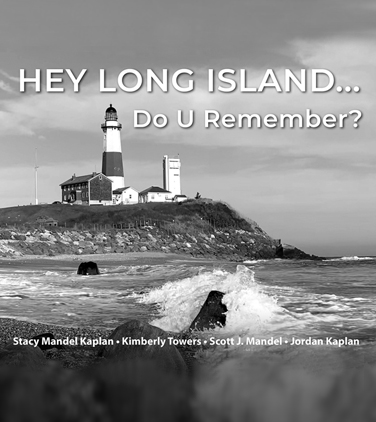
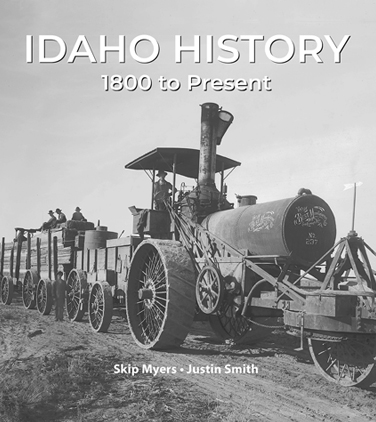
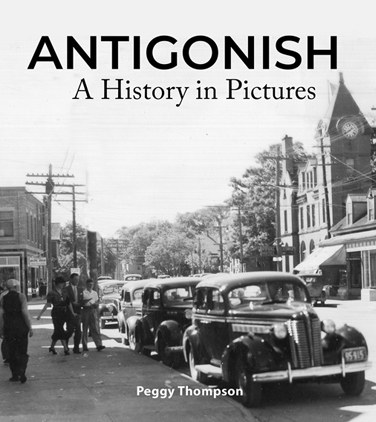
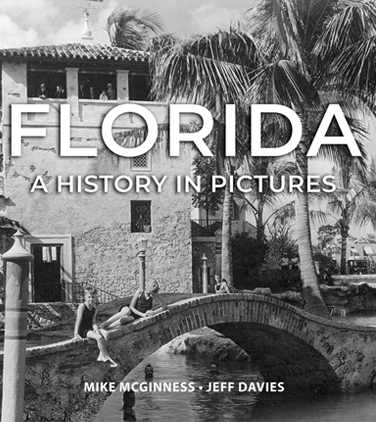
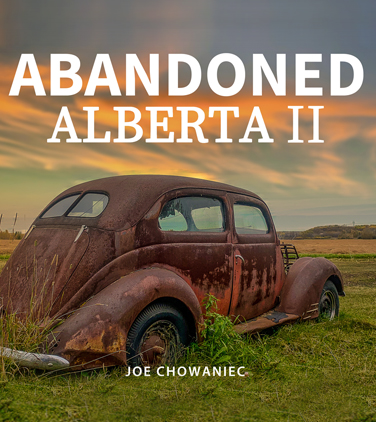
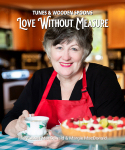
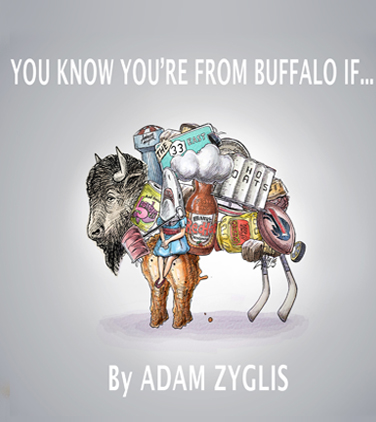
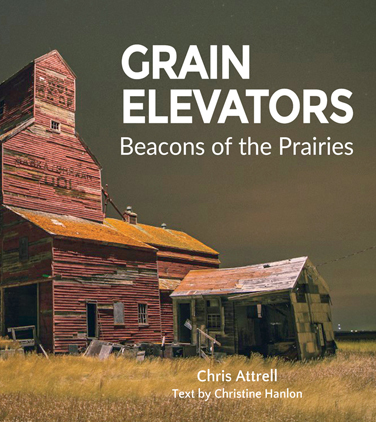

Follow Us!